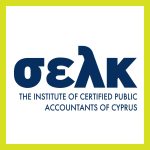A guide to accounting for digital assets and cryptocurrencies
What are Crypto assets?
A crypto asset is any digital asset built using blockchain technology. This includes cryptocurrencies, stablecoins such as Tether (USDT) which are assets designed to track the price of an underlying asset therefore minimising price volatility, and security tokens which are the digital form of traditional equity or fixed income securities.
What are Cryptocurrencies?
Cryptocurrencies are a subcategory of crypto assets. They are designed to work as a medium of exchange, store of value or to power applications. The IFRS Interpretations committee considered cryptocurrencies with all the following characteristics:
- a cryptocurrency that is a digital or virtual currency recorded on a distributed ledger and uses cryptography for security.
- a cryptocurrency that is not issued by a jurisdictional authority or other party.
- a holding of a cryptocurrency that does not give rise to a contract between the holder and another party.
How are they accounted for in the books of the holder?
The accounting treatment of cryptocurrencies will primarily depend on the intentions of the entity holding them and the way these assets are held e.g., whether the entity is holding the crypto assets directly or its crypto assets are held through a crypto – exchange.
The IFRS Interpretations Committee concluded that IAS 2 Inventories applies to cryptocurrencies when they are held for sale in the ordinary course of business. If IAS 2 is not applicable, an entity applies IAS 38 Intangible assets to holdings of cryptocurrencies.
IAS 2 Inventory
Inventories include assets that are held for sale in the ordinary course of business, assets in the production process for sale in the ordinary course of business, and materials and supplies that are consumed in production.
IAS 2 does not require inventory to be tangible.
IAS 2 requires measurement at the lower of cost and net realisable value
The costs of an acquired crypto asset would normally comprise its purchase price and any costs directly attributable to the acquisition of the crypto asset, such as processing fees. As per IAS 2 net realisable value is defined as the estimated selling price in the ordinary course of business less the estimated costs of completion and the estimated costs necessary to make the sale.
Fair value less costs to sell
A commodity broker-trader acquires and sells crypto assets to generate profits from price fluctuations or broker traders’ margin. These assets are therefore held for sale in the ordinary course of business. In such a scenario, the commodity broker-trader has the option to measure their inventory of crypto-assets at fair value less costs to sell. However, without an active market’s determination of an assets fair value, determining the fair value would be very challenging for the entity.
IAS 38 Intangible asset
An intangible asset is defined as ‘an identifiable non-monetary asset without physical substance. An asset is a resource controlled by an entity as a result of past events and from which future economic benefits are expected to flow to the entity.
Therefore, the essential characteristics of the definition of intangibles are:
- They are identifiable
- They lack physical substance
- Controlled by the entity
- Will give rise to future economic benefits
Initial Measurement
Crypto assets are accounted for as intangible assets with indefinite useful life and are initially measured at cost. The cost of acquiring crypto assets would generally involve expenses such as the buying price and additional transaction costs, which may include blockchain processing fees.
Subsequent measurement
Cost model
The cost method under IAS 38 entails subsequent measurement at cost less amortisation and impairment. In most cases, no amortisation is expected for cryptocurrencies. The Crypto assets are subject to impairment if their fair value decreases below it’s carrying amount. The fair value is measured using the quoted price of the crypto asset at the time its fair value is being measured. The impairment loss is recognised in profit or loss.
Revaluation model
The revaluation model can only be applied to crypto assets if the fair value can be determined through an active market as this is defined by IFRS 13.
Under the revaluation model, crypto assets are measured at their fair value on the date of revaluation less any impairment losses. The increase in fair value over the initial cost of the intangible asset is recorded through other comprehensive income in the revaluation reserve. A net decrease below cost is recorded in profit or loss.
It is important to note that these guidelines are not exhaustive, and the treatment of crypto assets under IFRS may vary depending on the nature and circumstances of the crypto asset. Companies should seek professional advice to ensure accurate accounting treatment of crypto assets under IFRS.
This article is a repost from our associated Audit firm Nikita & Partners.




